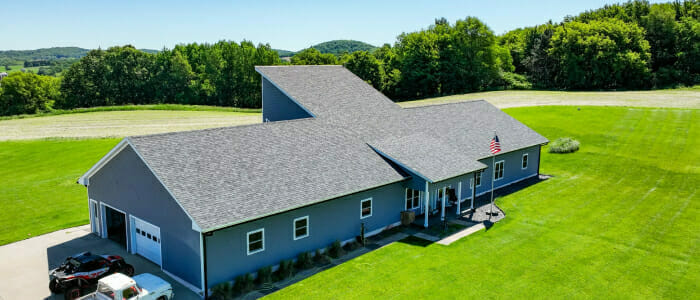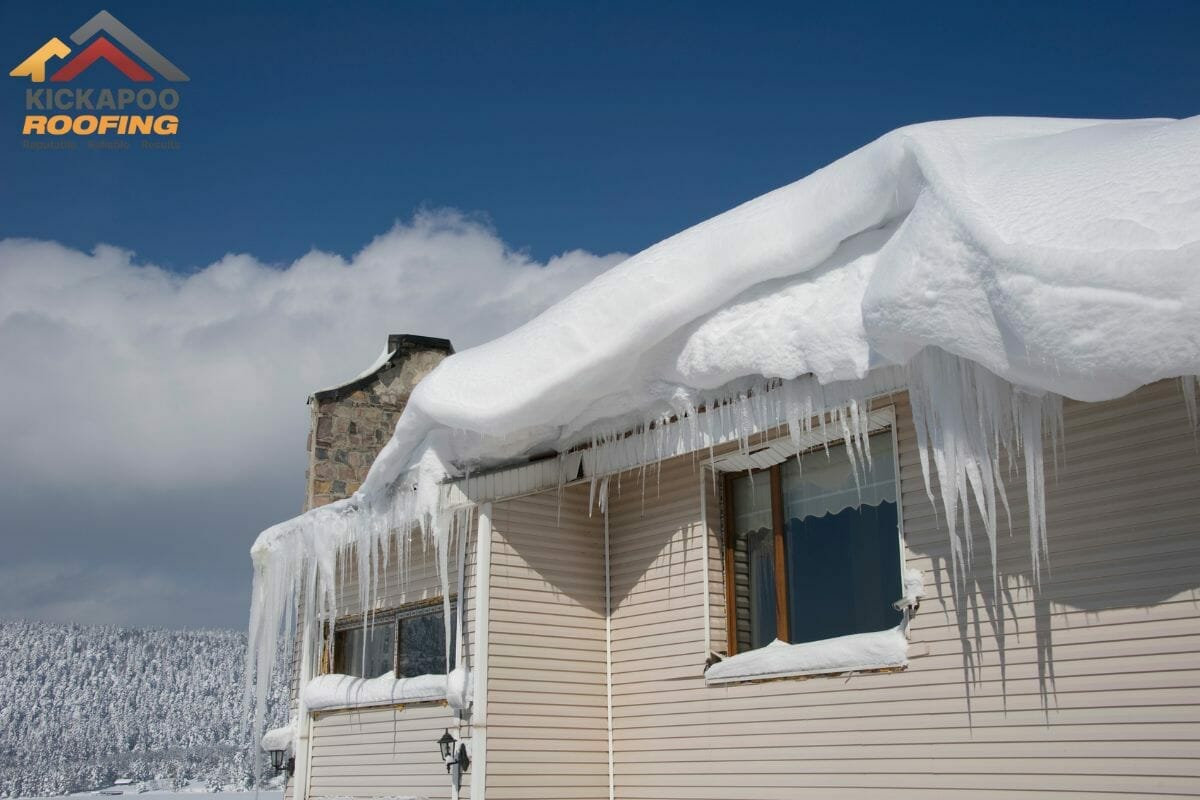As the quote from a popular series goes, “Winter is coming”! Yes, it’s that time of the year again, but along with the colder temperatures and beautiful scenery, winter can bring problems for your home too. The formation of ice dams on the roof of your home is one issue you should watch out for this season.
Ice dams are something that plagues homeowners every winter. An ice dam is when a layer of ice builds up along the edge of your roof and prevents melted water from flowing off. This backed-up water can pool and leak into your home, causing serious damage. If you don’t deal with the problem quickly, it can become a more expensive issue.
This article will explain what ice dams are, and the preventative measures you can take to stop them from forming on your roof in the first place.
What Is An Ice Dam?
An ice dam is a thick sheet of ice that forms along the eaves or edges of the building’s roof. They’re caused when the snow and ice piled on your roof begins to melt, then refreezes overnight. When an ice dam forms, the melting water has nowhere else to go and can cause this water to leak into your home. Because of this, it’s important to keep your roof in good condition, so you don’t have any issues with ice dams.

How Do Ice Dams Form?
Ice dams are a common problem in the winter season, and form due to temperature shifts in different areas of your roof. The heat coming from your house is also a contributing factor to this since it will cause the higher portion of your roof where heat is escaping to be warmer. The snow then melts from these higher portions and runs down to the eaves of the roof. Since the eaves are further away from the heat source the water will freeze as it reaches the edge. As more of this freezing water accumulates, it forms what we know as the ice dam.
Smaller ice dams can also occur when days are warmer and the snow melts than refreezes during the night. If this cycle lasts for multiple days smaller ice dams will begin to form along your roof’s edge. Though they might seem harmless, these ice dams can cause serious issues.
Consequences Of An Ice Dam Formation
When ice dams form on the edge of your roof, they might look beautiful, but they represent the damage that is occurring underneath. Ice dams can damage your roof in numerous ways. The ice on the edge of the roof can tear your gutters down if it’s heavy enough, and also loosen your shingles. The icicles that form can even fall and hurt you or your family. Snow that has melted and is backed up behind the dam can pool and leak under the damaged shingles, finding its way into your home.
Removing the ice dam is a tedious process that you do not want to do alone. To avoid this, you need to take proper steps to prevent them. This is what we talk about in the following section.
Ice Dam Prevention: What Can You Do To Protect Your Home?
Investing in ways to prevent ice dams from forming on your roof is less expensive than repairing the damage that these dams cause in the long run. Many people don’t realize they have an ice dam on their homes until they start noticing water leaking from the damaged ceilings, walls, and floors. To prevent this from happening to you, here are some tips on what you can do.
Improve Ventilation
Roof ventilation is an important part of an ideal roof. One of the best ways to prevent ice dams is to ventilate your attic. One of the primary reasons for ice damming on roofs is the hot air that builds up in the attic space. The air heats the shingles just above the attic, which causes the snow to melt and travel downwards. If you keep the roof and the attic area cool, and well-ventilated, then you can prevent ice dams. Here are some ways you can do it:
Roof Vents
Roof vents can play a crucial role in improving the roof ventilation of your residential property. If there is circulation in the attic and the air remains cooler, then it will not be able to melt the snow off the roof. You can prevent heat loss and keep the attic cold by installing roof vents.
Roof vents are usually installed on the peak of the roof. The vents have small holes that help draw winter’s cold air into the attic and circulate the air evenly throughout the space. This will reduce the hot air build-up, reducing the chances of snowmelt.
Add Soffit Vents
Roof ridge vents, along with soffit vents, are other important prevention methods to control ice damming on the roof. A soffit is a type of exterior siding that occupies the space beneath the roof overhang. Soffit vents are intake vents that pull the outside air into your home. If the vents are damaged it will lead to moisture getting trapped, which can damage the roof and help form ice dams. Ensure that the opening is one square foot per 300 feet.
Improve The Attic Insulation In Your Home
Both ventilation and insulation should be kept in pristine condition, especially in the winter season. The roof insulation helps regulate the internal temperature of the property and helps you save on energy bills. Therefore if you do not have insulation installed, you should contact a contractor right away. Make sure the insulation type you install is durable and has a high R-value.
If you already have roof insulation, check whether it’s enough for your home. The average requirement for insulation in an attic space is 10-14 inches.
There are a few different types of insulation available:
- Fiberglass Batt
- Spray Foam Insulation
- Rigid Board Insulation
Seal Off The Leaking Areas
One of the major steps in prevention is to detect the areas that are vulnerable to air leaks.
Air leaks are a common cause of ice dams, and these leaks can occur anywhere in your home. Warm air escapes through cracks or gaps between the roof and the house, melting the snow on your roof that can lead to ice dams. Cracks in the chimney, and damaged shingles, are common culprits of air leaks.
How do you stop this from occurring? You can stop air leaks by sealing and caulking the gaps you find in your home. However, most of these air leaks are present in risky areas of the roof. Reaching them can be difficult, so it is better to contact professional roofing contractors in La Crosse to help you.
Keep Your Gutters Clean
Most homeowners understand that gutters are an essential component in protecting their homes from water damage, but gutters can serve other purposes too. Clean gutters can help you prevent the formation of ice dams.
If the gutters are maintained regularly, they allow the melted snow to pass easily through them without refreezing on the edge. If you have gutter guards installed on your home’s roof, ensure they are working correctly and are free of any holes or tears that could let water seep into your attic during freezing weather conditions.
Get The Best Roofing Services
There are many ways you can prevent ice damming on your roof, and the methods described in the blog above are some of the most effective ways. You should always take care of your home and keep an eye out for any signs of damage that may occur. If you see something wrong, don’t wait until springtime, call a professional immediately!
Kickapoo Roofing is one of the best roofing companies serving the areas of Wisconsin. We have years of experience helping homeowners, and fully understand the ways in which Wisconsin weather can wreak havoc on your roof.
Contact us at (608) 352-8688 to book a free roof inspection with our experienced roofing team.
 (608) 352-8688
(608) 352-8688  schedule consultation
schedule consultation


